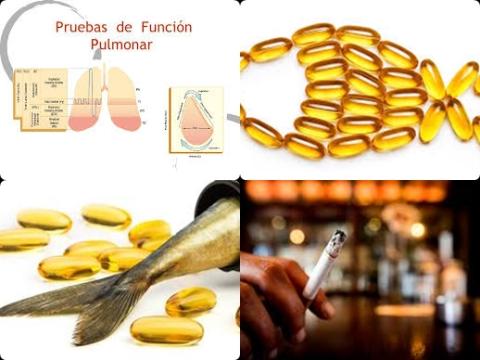
Objectives:
Does dietary intake of n-3 PUFAs (such as DHA, EPA, DPA and ALA) or fish consumption improve lung function?
Study design:
This review article included 9 cohort studies from the Cohorts for Heart and Aging Research in Genomic Epidemiology Consortium (n = 37,077 black and white participants).
In each cohort and each ancestry, separately, associations of dietary n-3 PUFA/fish intake with lung function were estimated in linear regression models.
Fixed-effects meta-analysis was used to generate summarized effect estimates across the cohorts and ancestries.
The lung function was measured by the forced expiratory volume in 1 second (FEV1) and the forced vital capacity (FVC).
Results and conclusions:
The investigators found dietary DPA, DHA, EPA and fish intake significantly improved forced expiratory volume in one second (FEV1) and forced vital capacity (FVC).
However, dietary α-linolenic acid (ALA) had little to no association with these lung function parameters.
The investigators found associations were similar for black and white participants and consistent in direction and magnitude across most cohort studies.
The investigators found for all participants, 1 standard deviation (SD) higher dietary intake of DPA (∼30 mg/d), DHA (∼200 mg/d) and EPA (∼150 mg/d) were associated with 12-16 mL higher FEV1 and 10-15 mL higher FVC.
The effect estimates for fish consumption were in the same direction but smaller in magnitude.
The investigators found ∼200 mg/d DHA and ∼150 mg/d EPA were associated with 28-32 mL higher FEV1 and 24-25 mL higher FVC in current smokers.
The investigators found ∼200 mg/d DHA and ∼150 mg/d EPA were associated with 17-21 mL higher FEV1 and 7-12 mL higher FVC in former smokers.
The investigators found ∼200 mg/d DHA and ∼150 mg/d EPA had little to no association with FEV1 and FVC in never smokers.
The investigators concluded that dietary ∼200 mg/d DHA, ∼30 mg/d DPA and ∼150 mg/d EPA and fish intake are associated with higher lung function, especially among current and former smokers.
Original title:
Positive Associations of Dietary Marine Omega-3 Polyunsaturated Fatty Acids with Lung Function: A Meta-analysis (P18-087-19) by Patchen B, Xu J, […], Cassano P.
Link:
https://www.ncbi.nlm.nih.gov/pmc/articles/PMC6579416/
Additional information of El Mondo:
Find more information/studies on fish consumption, review article/significantly and chronic disease right here.
DHA, DPA and EPA are found in fish.